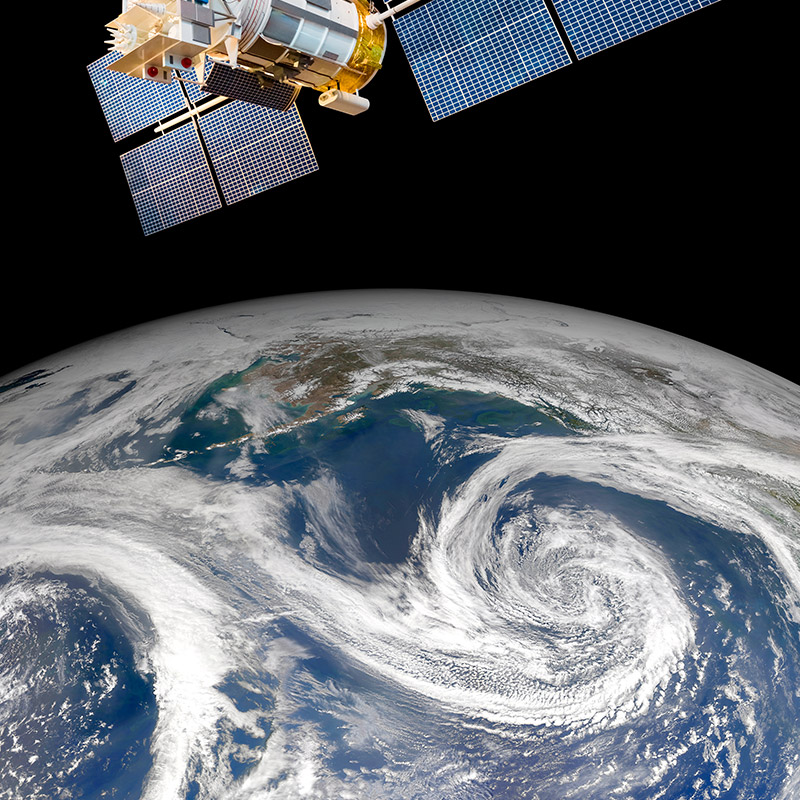Earth and Environmental Sciences
Global warming, particulate matter, unusual change in the weather, ozone hole in the stratosphere, desertification, devastation of the ecosystem, acid rain, sea pollution, and El Nino and La Nina Phenomenon. People’s concern about above mentioned global environmental issues become a part of our daily life. Also a planetoid collision, huge earthquake, volcanic eruption, tsunami, and dismal future caused by the environmental disruption and pollution are used as subject matters of many SF films. These environmental problems indicate diverse questions. "Do these imaginary events actually occur?"
"Why can’t the scientists have a good grasp of these problems?"
"How accurate can the scientist predict out future?"
The earth is the planet of life. The top priority that Earth and Environmental Sciences has to solve is how to maintain the earth as a planet of life. As a part of the immense universe, the earth consists of the Atmosphere, Geosphere, Hydrosphere, and Biosphere which are interacting continuously to make the earth live. A Learning related to these issues is not detached from the world, but deeply connected with our daily life.
A study that is dealing with global environmental problems is Earth and Environmental Sciences. Earth and Environmental Sciences is a part of natural science that studies component parts, circulations, and changing mechanisms of the Atmosphere, Geosphere, and the Hydrosphere; that analyzes and predicts the formation and changes of the natural environment and studies interactions and influences among these spheres and biosphere. In order to understand Earth and Environmental formation and changes, the object of Earth and Environmental Sciences offers a method to analyze, predict, and restore various scale of kinetic and material system’s formation, evolution, extinction and interaction between them. These researches are conducted by introducing an applied scientific technology that is based on an understanding of basic science.
Earth and Environmental Sciences is a synthetic study including Atmospheric Science that researches physical and chemical status and movement of the earth’s atmosphere; Earth System Science that researches the Earth’s material, formation, evolution, and energy circulation; Oceanography that researches physical circulation of oceanic material and resources. Students study each part of the Earth and Environmental Sciences intensively according to their interests. Namely, they select their curriculum track including Atmospheric Science, Earth System Science, and Oceanography.

Atmospheric Sciences
- To examine the order and law of the atmosphere by understanding movement and physical/chemical status of it
- To predict exact weather and climate changes by researching movement and circulation of the atmosphere
- To understand the principles of atmospheric radiation, cloud formation, and the interaction between them
- To make an atmospheric model related to weather, climate changes and to utilize it for research and practical application
- To trace the movement of gaseous and particle-type pollutant in the atmosphere and to evaluate their influence on the environment
- To apply the knowledge and prediction to agriculture, fishery, manufacturing, the airline industry, the ocean industry, transportation, the high-tech industry

Earth System Sciences
- To understand earth-forming materials and process of their evolution
- To understand the origin, differentiation of earth-forming materials and the changes of them according to the temperature and pressure
- To examine the earth’s inner structure by utilizing the earthquake, gravitational field, and magnetic field
- To trace the evolutionary process of earth environment and organisms by rocks and fossils
- To monitor changes of the global environment by an artificial satellite-remote sensing and prevent nature disasters
- To explore the natural resources and to conduct basic investigation for an efficient land development
- To understand environmental changes of solids and fluids inside the earth such as soil and groundwater

Oceanography
- To understand overall physical, chemical, biological phenomena in the ocean
- To understand movements of the ocean water such as a current, tide and to research related phenomena: El Nino, global warming, etc.
- To exainvestigate mine specific characters and origin of the ingredients in the ocean water
- To the marine life and the distribution of the resources and to utilize them
- To examine the changes of oceanic environment based on the research of ocean floor sediments and topography
- To deal with the oceanic pollution, to preserve and restore the marine life, and to make practical application of the mineral resources and the oceanic space
Research Group
School of Earth and Environmental Sciences is managing 10 research groups for conducting creative and leading cooperative research about environmental problems.After Graduate
Earth and Environmental Sciences field is rapidly developing as our concern for the quality of life increase. With the economical and social growth of our society, many professionals of Earth and Environmental Sciences are required in various fields: government agencies, research institutes, related companies, and broadcasting stations.
After obtaining a bachelor’s degree, students go on to an internal or external graduate school, or are employed. Students who obtain a master’s or doctor’s degree within the country accumulate a career as a researcher at abroad universities and laboratories. They stay abroad or return to the homeland to be employed by universities, research institutes, or related companies.
Due to the characteristic of Earth and Environmental Sciences, where international exchanges are active, The doctor’s degree holders can have a stable profession at global research institutes or related organizations of inside and outside of the country such as NASA, NOAA.












